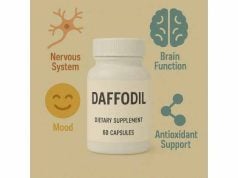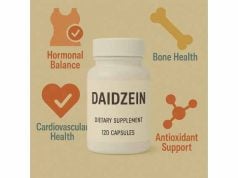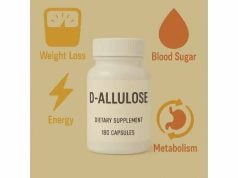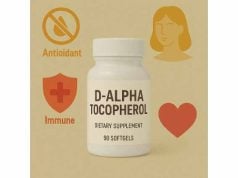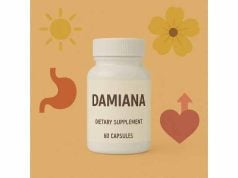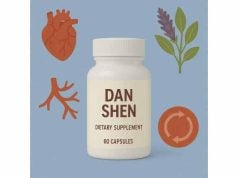
Dog rose (Rosa canina) is a hardy wild rose whose small, bright-red fruits—rose hips—have a long history in European and Middle Eastern folk medicine and food. Modern analyses show that dog rose is rich in vitamin C, polyphenols (including flavonols and phenolic acids), carotenoids (lycopene, beta-carotene), and distinctive galactolipids. These nutrients and plant compounds together explain why dog rose teas, powders, and extracts are often used for joint comfort, immune support, and general wellness. Clinical research is still developing, but several trials suggest rosehip preparations can modestly ease osteoarthritis symptoms and support heart markers like LDL cholesterol and systolic blood pressure in specific contexts. This guide distills what matters: how dog rose might help, how to choose and use it, safe dosage ranges, who should avoid it, and what the evidence actually supports—so you can make a clear, practical decision.
Quick Dog Rose Highlights
- May modestly reduce osteoarthritis pain and morning stiffness over 8–12 weeks.
- Provides vitamin C and polyphenols; antioxidant and anti-inflammatory activity reported.
- Typical dose: 5 g/day standardized rosehip powder; tea uses ~2–5 g dried hips per cup.
- Mild gastrointestinal upset can occur; high-dose vitamin C increases kidney stone risk in susceptible people.
- Avoid if allergic to Rosaceae plants or if you use warfarin unless your clinician agrees.
Table of Contents
- What is dog rose and what is in it?
- Does dog rose work? Benefits explained
- How to use dog rose day to day
- How much dog rose per day?
- Common mistakes and who should avoid it
- Evidence snapshot: what studies say
What is dog rose and what is in it?
Dog rose (Rosa canina) is a climbing wild rose native to Europe, Western Asia, and North Africa, now naturalized elsewhere. Its fruits (rose hips) ripen in late summer to autumn and are used fresh, dried, or processed into powders and extracts. While the flowers and leaves have their own traditional uses, most supplements and foods rely on the hips.
Chemically, dog rose is notable for several groups of compounds:
- Vitamin C (ascorbic acid): Rose hips are among the most concentrated natural sources, though the exact amount varies widely by species, altitude, cultivar, ripeness, and processing. Heat and prolonged storage degrade vitamin C, which is why gentle drying and minimal heat exposure are preferred during manufacturing and home preparation.
- Polyphenols: These include flavonols (quercetin and kaempferol derivatives), catechins, and phenolic acids (gallic, ellagic, and chlorogenic acids). Polyphenols contribute antioxidant activity and may modulate inflammatory pathways such as COX enzymes and NF-κB signaling in preclinical models.
- Carotenoids: Lycopene, beta-carotene, lutein, and zeaxanthin give rose hips their color and add antioxidant capacity. Carotenoid levels depend on sun exposure, ripeness, and lipid content in preparations (carotenoids extract better into fats).
- Galactolipids (e.g., GOPO): These glycolipids have drawn interest for potential anti-inflammatory effects. Some lab studies show reduced neutrophil chemotaxis and oxidative burst, offering a mechanistic hypothesis for joint symptom relief reported in clinical trials.
- Fibers and organic acids: Pectins and fruit acids (citric, malic) may support digestive comfort and, at higher intakes, affect bile acid recycling—one proposed mechanism behind small reductions in LDL cholesterol seen in a human trial using a high-fiber rosehip drink.
Terminology varies on labels. You may see “rosehip powder,” “standardized rosehip powder,” “rosehip extract,” or “Rosa canina fruit extract.” Some preparations blend shells and seeds; others use shells only. Seeds are richer in oils, while shells hold more vitamin C and certain polyphenols. Standardized products typically declare marker compounds (e.g., total vitamin C or polyphenols) and sometimes the galactolipid content; non-standardized powders may vary more from batch to batch.
Finally, dog rose is a food-plant as well as a supplement. Traditional uses include jams, syrups, teas (tisanes), and cordials. Culinary processing—especially boiling—can reduce vitamin C but often preserves or concentrates polyphenols, so the overall profile changes with preparation. If you’re seeking vitamin C specifically, gentler methods (short infusions, low-heat drying) tend to retain more of it; if you’re aiming for broader phytonutrient intake, a well-made powder or extract can be a good option.
Does dog rose work? Benefits explained
Research on dog rose focuses on three areas: joint comfort in osteoarthritis, cardiometabolic markers, and general antioxidant/immune support.
Osteoarthritis (OA). Several randomized, placebo-controlled trials have tested standardized rosehip powders over periods of 8–16 weeks. Across studies, participants often reported modest reductions in pain and morning stiffness along with small decreases in rescue analgesic use. Effects appear after a few weeks and may strengthen through month three. Proposed mechanisms include reduced inflammatory mediator production and less neutrophil activity (linked to galactolipids), together with antioxidant effects from polyphenols and carotenoids. While outcomes like pain scores (e.g., WOMAC) improved, effect sizes were small to moderate, underscoring that rosehip is not a replacement for guideline-directed OA care. It is better framed as an adjunct for symptom relief in people who tolerate it and prefer a plant-based option.
Cardiometabolic markers. In a crossover, double-blind study in obese adults, a daily rosehip drink (a high-fiber, shell-based preparation) consumed for six weeks reduced total cholesterol (~5%), LDL cholesterol (~6%), and systolic blood pressure (~3–4%) compared with a matched control drink. These are modest changes and were more notable in non-statin users. Follow-up work (including a 2023 systematic review) suggests potential LDL-lowering benefits from specific rosehip extracts but highlights variability among preparations, doses, and study designs. In plain terms: for cardiometabolic support, formulation and dose matter, and the evidence supports small, incremental improvements rather than dramatic changes.
Antioxidant and immune support. Dog rose is nutrient-dense: vitamin C, flavonols, and carotenoids contribute to total antioxidant capacity in vitro. Vitamin C supports collagen formation (skin, cartilage, blood vessels) and immune function, while flavonols and phenolic acids may blunt oxidative stress. That said, vitamin C content in consumer products varies and can degrade with heat; claims of extremely high vitamin C may not reflect what reaches your cup or capsule. For day-to-day wellbeing, dog rose offers broad phytonutrient coverage more than a single-nutrient punch.
What to expect. If dog rose helps you, improvements are typically gradual: smoother mornings, slightly easier movement, or small shifts in cholesterol and blood pressure when paired with diet and activity. People who don’t notice benefits by 8–12 weeks often discontinue or switch formulations. Individuals differ—genetics, gut microbiota, and baseline diet all shape response.
Bottom line: dog rose has a credible profile for mild OA symptom relief and possible LDL and systolic blood pressure benefits with certain preparations. It’s best considered as a supportive addition to standard care, not a standalone therapy.
How to use dog rose day to day
You can use dog rose as tea (tisane), powder, capsules, or standardized extract. The right form depends on your goal, taste, and tolerance.
1) For joint comfort (OA adjunct):
- Standardized rosehip powder is the form most studied for osteoarthritis. It typically includes shells (and sometimes seeds).
- How to take: Many trials used 5 g per day, often divided (e.g., 2.5 g twice daily) with meals. Capsules make dosing easier; powders are more versatile if you prefer smoothies or yogurt.
2) For general wellness and antioxidant intake:
- Tea (steeped hips): Use ~2–5 g (about 1–2 teaspoons) of crushed dried hips per 250 ml water. Simmer gently or steep hot (not boiling) water for 10–15 minutes, then strain. A squeeze of lemon after brewing brightens flavor and preserves aromatics.
- Powders/extracts: A daily serving of 2–5 g rosehip powder folded into food offers a broader polyphenol profile than tea alone, which loses some vitamin C to heat.
3) For cardiometabolic markers (LDL, systolic blood pressure):
- Evidence suggests effects with higher-fiber, shell-based preparations at larger intakes. Human data include a 40 g/day rosehip drink used for six weeks in a controlled setting—an amount that’s impractical for most people and more likely to cause GI symptoms. A pragmatic approach is to start with 5 g/day standardized powder for 8–12 weeks while optimizing diet (soluble fiber, plant sterols) and activity; reassess with your clinician.
Tips for best results
- Consistency beats intensity. Take your chosen form daily for at least 8 weeks before judging its effect, especially for joints.
- Pair with meals. Taking powder or capsules with food often improves tolerance and may enhance carotenoid absorption (thanks to dietary fats).
- Mind the preparation. For tea, avoid vigorous boiling which degrades vitamin C. For powders, store in a cool, dry, dark place; seal tightly to limit oxidation.
- Read the label. Look for the plant name (Rosa canina), the part used (hips; shells and/or seeds), any standardization (e.g., total vitamin C or polyphenols), and third-party quality testing.
- Set a stop-rule. If you notice no change in symptoms or wellbeing after 12 weeks at a reasonable dose, it’s sensible to stop or try a different formulation under professional guidance.
Who might especially consider dog rose?
- Adults with mild OA symptoms seeking an adjunct to exercise, weight management, and guideline-directed analgesics.
- People who prefer plant-based sources of vitamin C and polyphenols and enjoy tea or powder formats.
Who should not rely on it alone?
- Anyone with significant joint disease limiting function or sleep—work with a clinician on a comprehensive plan.
- People with high cardiovascular risk—dog rose cannot replace statins, antihypertensives, or lifestyle therapy when indicated.
How much dog rose per day?
There isn’t a universal dose for all goals, but reasonable ranges emerge from clinical trials and traditional use:
Standardized rosehip powder (capsules or loose):
- Typical target: 5 g/day (often 2.5 g twice daily with meals). This is the dose most frequently used in osteoarthritis studies that reported pain and stiffness benefits over 8–12 weeks.
- Duration: Allow 8–12 weeks to judge effect. Some people maintain the same dose; others taper to 2.5 g/day if symptoms remain controlled (this is individualized and not formally established).
Rosehip tea (tisane):
- Common preparation: ~2–5 g dried hips per 250 ml hot water; steep 10–15 minutes and strain.
- Frequency: 1–3 cups per day as part of a balanced diet. Tea offers a pleasant way to consume polyphenols; vitamin C content will be lower than in carefully dried powder and depends on steeping and freshness.
Rosehip extract (standardized):
- Extracts vary widely. Follow label directions and confirm the standardized compounds (e.g., total vitamin C or polyphenols). A daily amount delivering ~250–500 mg vitamin C from rosehip plus polyphenols is typical in multi-ingredient formulas; in single-ingredient extracts, per-capsule weights may look small but concentrates can be potent.
High-fiber rosehip drinks (shell-based):
- 40 g/day for 6 weeks reduced LDL cholesterol (~6%) and systolic blood pressure (~3–4%) in one controlled study. This is a research dose with more GI complaints; it’s not a common consumer regimen.
Vitamin C content and expectations:
- Rosehip vitamin C naturally spans a wide range by species and handling. Boiling and long storage reduce it. If you’re primarily after vitamin C, choose a standardized product or pair dog rose with vitamin C-rich foods (kiwifruit, peppers) rather than chasing high per-label numbers that real-world preparation may not deliver.
Practical dosing examples
- OA adjunct: 2.5 g rosehip powder with breakfast + 2.5 g with dinner for 12 weeks; continue if benefit persists.
- Tea-first approach: 1–2 cups/day using 2–5 g dried hips per cup; after 4–6 weeks, consider adding 2.5–5 g/day powder if joints remain stiff.
- Cardiometabolic curiosity: trial 5 g/day standardized powder for 8–12 weeks alongside diet and exercise; retest lipids and blood pressure. If no change, discontinue or discuss alternatives.
As always, consider body size, gut sensitivity, and concurrent medications. Start at the lower end if you tend to have a sensitive stomach.
Common mistakes and who should avoid it
Common mistakes
- Expecting quick, dramatic results. Dog rose isn’t a fast-acting analgesic. In OA trials, benefits emerged over weeks, not days, and were modest.
- Over-relying on vitamin C claims. Labels sometimes cite very high vitamin C figures that don’t account for losses from heat and storage. Treat dog rose as a broad phytonutrient source; if you need a precise vitamin C dose, use a product that states standardized content or meet your needs with food.
- Using too little for too short a time. Teas and micro-doses may not move the needle. A 5 g/day standardized powder for 8–12 weeks is a clearer test period for joints.
- Ignoring formulation. Shell-only powders differ from shell-plus-seed powders; extracts may concentrate different compounds. If a brand discloses standardization or specific markers (e.g., polyphenols, GOPO), you’ll have more predictable effects.
- Skipping lifestyle basics. For joints: strengthening, weight management, and pacing remain core. For heart health: diet quality, soluble fiber, and activity dwarf the expected impact of any single plant.
Who should avoid or use with caution
- Allergy: Avoid if you’re allergic to Rosaceae family plants (e.g., roses, apples, strawberries) or if you’ve had reactions to rosehip products.
- Kidney stone history (calcium oxalate): Large vitamin C intakes raise oxalate; people with prior stones should avoid high-dose vitamin C and discuss rosehip use with their clinician.
- Warfarin (Jantoven) users: High vitamin C intake may reduce warfarin effect; if you use warfarin, do not start rosehip supplements without clinician approval and closer INR monitoring.
- Iron overload (hemochromatosis): Vitamin C increases iron absorption. Avoid concentrated vitamin C sources unless your specialist approves.
- Pregnancy and lactation: Culinary amounts in food and tea are generally considered acceptable; for supplement-level intakes, consult your obstetric clinician due to limited targeted safety data.
- Upcoming lab tests: High vitamin C can interfere with certain assays (e.g., stool occult blood, some glucose tests). Pause supplements as directed by your lab or clinician.
Likely side effects
- Gastrointestinal: Bloating, loose stools, or cramping—especially at higher doses or with high-fiber preparations. Splitting doses with meals usually helps.
- Headache or fatigue are occasionally reported; these tend to resolve when the product is stopped.
- Rare: Skin or respiratory allergic reactions.
If you notice new bruising, bleeding, or signs of an allergic reaction, stop and seek medical care. When in doubt—especially with anticoagulants, antiplatelets, or complex regimens—coordinate any supplement with your healthcare professional.
Evidence snapshot: what studies say
Osteoarthritis pain and stiffness
Randomized, double-blind trials of standardized rosehip powder (often 5 g/day for 3–4 months) generally show modest improvements in pain and morning stiffness versus placebo, with some reductions in rescue analgesic use. Effects tend to appear by 3–8 weeks and can strengthen by 12 weeks. The magnitude is clinically meaningful for some individuals but not universal. Notably, trial designs vary—some include shells and seeds, others shells only; study quality ranges from solid to moderate; several trials received manufacturer support. Take-home: adjunctive benefit is plausible; independent, longer trials would clarify durability and subgroup responders.
LDL cholesterol and systolic blood pressure
In obese adults not necessarily on statins, a shell-based, high-fiber rosehip drink taken daily for six weeks reduced LDL by about 6% and systolic blood pressure by ~3–4% compared with a control drink. These shifts are modest yet directionally favorable. A 2023 systematic review suggests rosehip extracts may reduce LDL-C and fasting glucose in selected settings, but heterogeneity in product type and dose limits firm conclusions. Importantly, such changes are not substitutes for lipid-lowering drugs when indicated; they’re adjuncts that may complement diet (soluble fiber, sterols) and activity.
Mechanisms and composition
Laboratory work supports multiple plausible mechanisms: antioxidant effects from flavonols and carotenoids; anti-inflammatory actions from galactolipids (e.g., inhibition of neutrophil chemotaxis); and fiber-mediated bile acid binding that can nudge LDL downward. Composition studies confirm rich ascorbic acid and polyphenol content, while also documenting large variation across genotypes, growing conditions, and processing. This explains real-world variability in both nutrient content and clinical response.
Safety
Across clinical trials, rosehip preparations were generally well tolerated. The most common adverse effects were mild GI symptoms (loose stools, flatulence), especially at higher doses or with high-fiber drinks. No serious adverse events were consistently attributed to rosehip in the short term. That said, people prone to kidney stones or on warfarin should exercise caution due to vitamin C-related concerns, and everyone should align supplement use with their broader care plan.
Confidence level
- Strongest signal: OA symptom relief with standardized powders over 8–12 weeks—modest benefit for some.
- Emerging/variable: LDL and fasting glucose effects—small, product- and dose-dependent.
- Supportive but indirect: Antioxidant/immune benefits from vitamin C and polyphenols—good rationale, limited targeted outcomes data.
- Research gaps: Independent, larger trials; head-to-head comparisons of shells-only versus shells-plus-seeds; long-term safety at higher intakes; standardized markers for galactolipids and polyphenols.
If you decide to try dog rose, use it purposefully: choose a standardized product, set a 12-week review point, and track what matters to you (morning stiffness, analgesic use, or lipid and blood pressure readings under clinician guidance).
References
- Recent advances and insights into the bioactive properties and applications of Rosa canina L. and its by-products 2024 (Review) ([PubMed Central][1])
- A powder made from seeds and shells of a rose-hip subspecies (Rosa canina) reduces symptoms of knee and hip osteoarthritis: a randomized, double-blind, placebo-controlled clinical trial 2005 (RCT) ([PubMed][2])
- Effects of rose hip intake on risk markers of type 2 diabetes and cardiovascular disease: a randomized, double-blind, cross-over investigation in obese persons 2011 (RCT) ([PubMed Central][3])
- Effects of Daily Intake of Rosehip Extract on Low-Density Lipoprotein Cholesterol and Blood Glucose Levels: A Systematic Review 2023 (Systematic Review) ([PubMed Central][4])
- Vitamin C – Health Professional Fact Sheet 2025 (Guideline/Reference) ([Office of Dietary Supplements][5])
Disclaimer
This article is for general information and education. It does not provide medical advice, diagnosis, or treatment, and it is not a substitute for care from your licensed healthcare professional. Always consult your clinician before starting, stopping, or changing any supplement—especially if you have medical conditions, are pregnant or breastfeeding, or take prescription medications (including anticoagulants).
If you found this guide useful, please consider sharing it with a friend or on Facebook or X. Your support helps us keep producing careful, people-first health content. Thank you.

